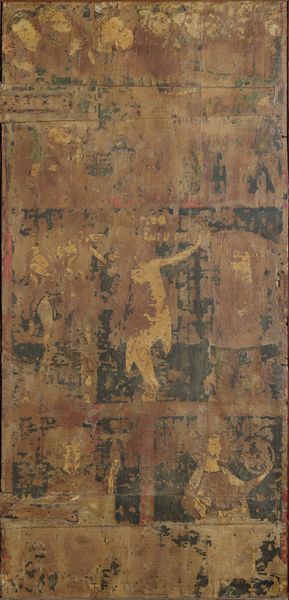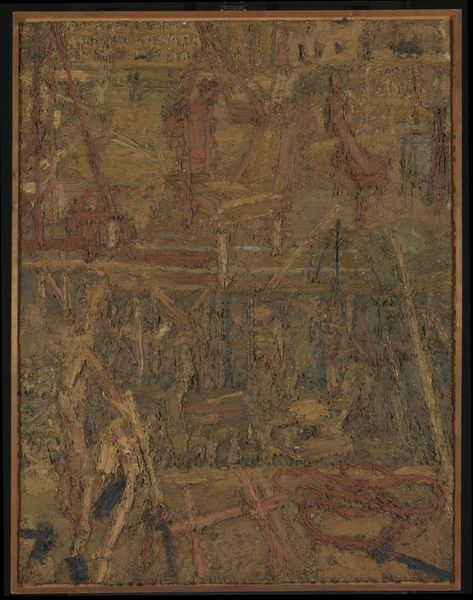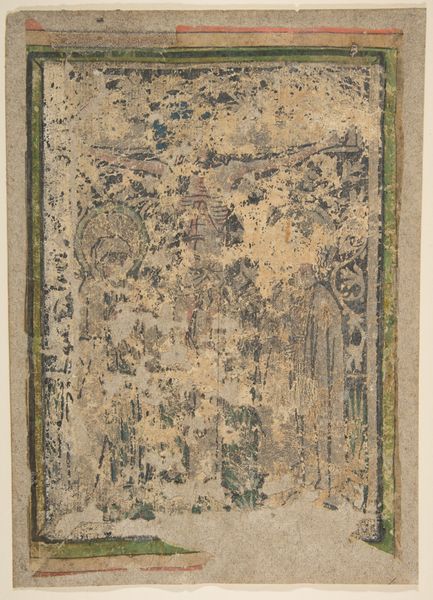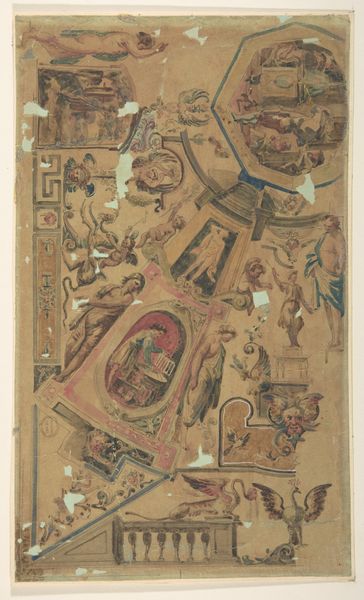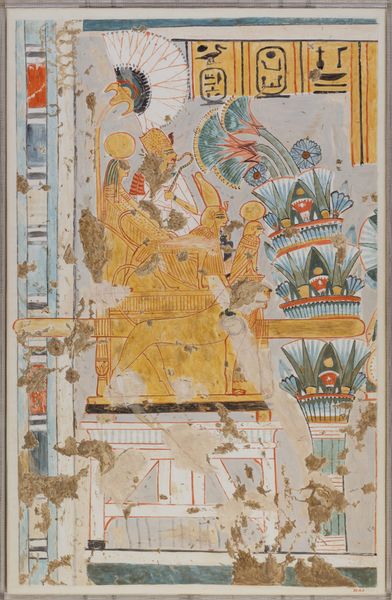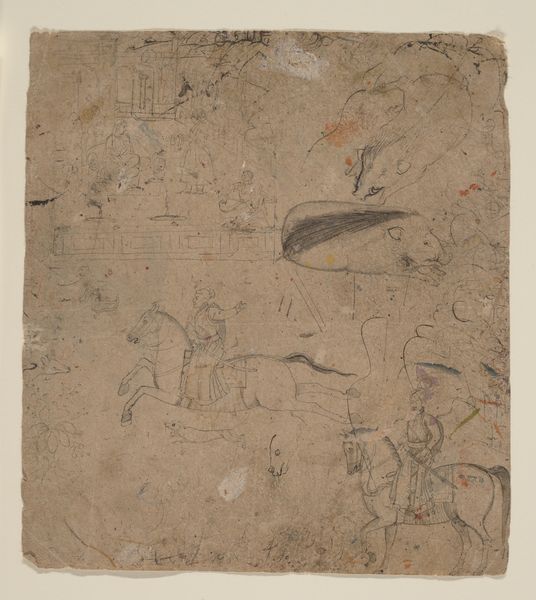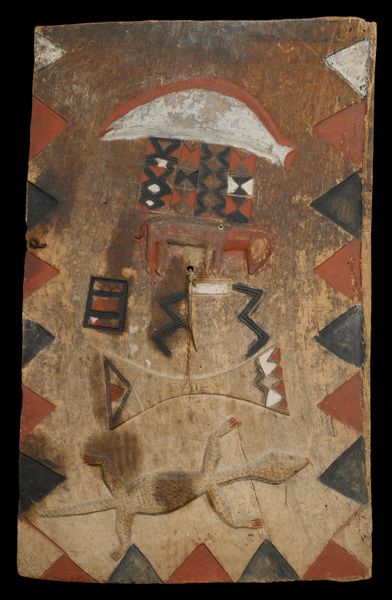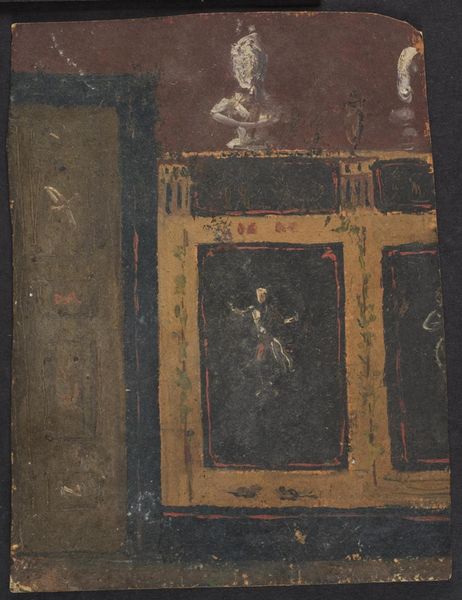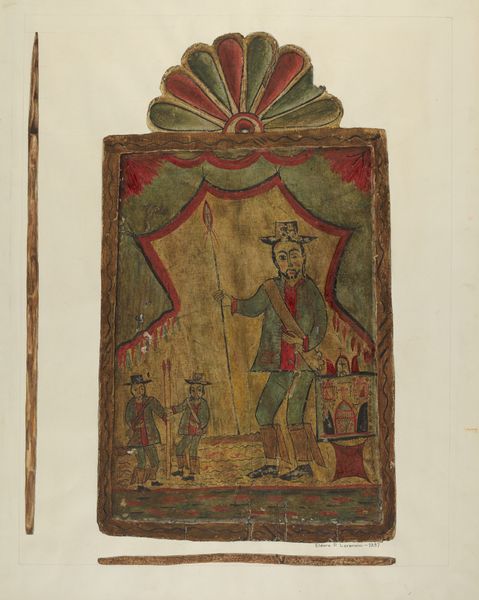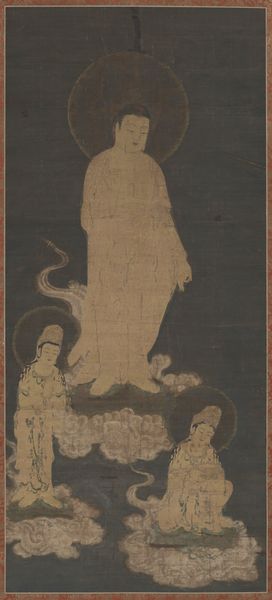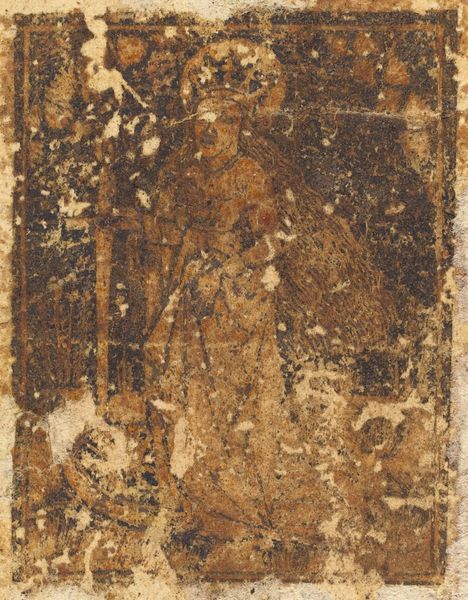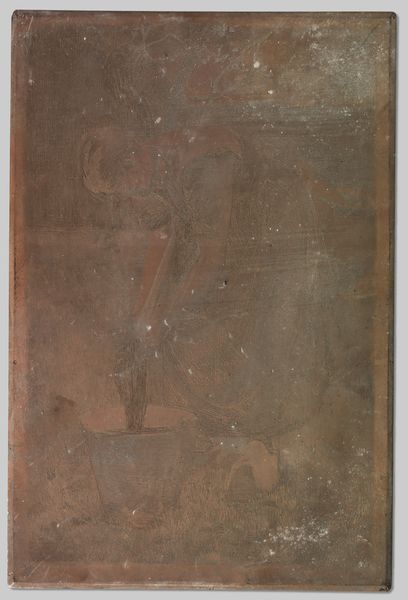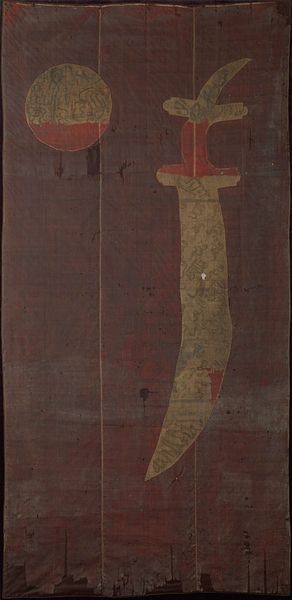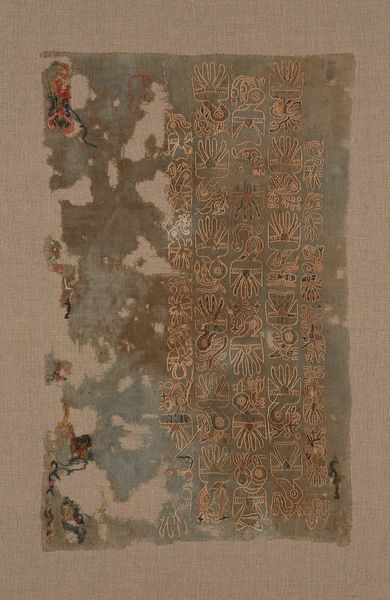
Christ before Pilate, Lamentation, female Saint and holy Bishop (Augustine_) (painted surface heavily damaged) 1325 - 1335
0:00
0:00
tempera, painting, oil-paint, fresco
#
medieval
#
tempera
#
painting
#
oil-paint
#
figuration
#
fresco
#
oil painting
#
history-painting
#
italian-renaissance
Dimensions: 153.7 x 119.2 x min. 2.8 cm
Copyright: Public Domain
Curator: Looking at this tempera on wood panel, "Christ before Pilate, Lamentation, female Saint and holy Bishop (Augustine_)," created sometime between 1325 and 1335, I’m immediately struck by the fragmented narrative and, honestly, the somber mood that emanates from the aged surface. Editor: The damage is quite significant, isn't it? It lends a spectral quality, like witnessing a faded memory. I wonder how the original viewers experienced this work, and what the artist intended to communicate to them politically through these scenes from Christ's Passion, and perhaps even via these representations of sainthood? Curator: Well, in early 14th-century art, especially with pieces like this, the patrons often dictated subject matter, with an emphasis on religious morality. It was not so much a radical political statement, as it was a reinforcing of accepted power structures. Editor: Still, by presenting particular scenes, artists inevitably invite audiences to engage critically. Considering intersectional identities, who were the disenfranchised? Were women granted space to connect with this Madonna-like female figure as active participants in their society, not just passive followers? How does the positioning of Christ, judged by the political class, expose biases or inequities? Curator: That's a very contemporary lens, focusing on identities, social inequity, gender... It makes me consider where this panel would have originally been located, maybe part of a larger altarpiece. I suspect the arrangement and context would offer other insight into its initial function. Editor: Museums curate our understanding of such pieces. A feminist approach here suggests thinking of alternative arrangements—might shifting the visual emphasis offer ways to address gender inequality, for instance? Art can promote inclusive narratives. Curator: Inclusive indeed. Understanding artistic narratives like these and considering how audiences throughout time viewed this is truly complex. Editor: And crucial. To critically question what we inherit enables us to reconstruct knowledge beyond patriarchal frameworks. What stories may the anonymous author tell, had the author existed today?
Comments
No comments
Be the first to comment and join the conversation on the ultimate creative platform.
